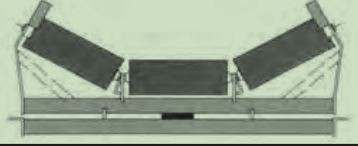 Afrikaans
Afrikaans  Albanian
Albanian  Amharic
Amharic  Arabic
Arabic  Armenian
Armenian  Azerbaijani
Azerbaijani  Basque
Basque  Belarusian
Belarusian  Bengali
Bengali  Bosnian
Bosnian  Bulgarian
Bulgarian  Catalan
Catalan  Cebuano
Cebuano  Corsican
Corsican  Croatian
Croatian  Czech
Czech  Danish
Danish  Dutch
Dutch  English
English  Esperanto
Esperanto  Estonian
Estonian  Finnish
Finnish  French
French  Frisian
Frisian  Galician
Galician  Georgian
Georgian  German
German  Greek
Greek  Gujarati
Gujarati  Haitian Creole
Haitian Creole  hausa
hausa  hawaiian
hawaiian  Hebrew
Hebrew  Hindi
Hindi  Miao
Miao  Hungarian
Hungarian  Icelandic
Icelandic  igbo
igbo  Indonesian
Indonesian  irish
irish  Italian
Italian  Japanese
Japanese  Javanese
Javanese  Kannada
Kannada  kazakh
kazakh  Khmer
Khmer  Rwandese
Rwandese  Korean
Korean  Kurdish
Kurdish  Kyrgyz
Kyrgyz  Lao
Lao  Latin
Latin  Latvian
Latvian  Lithuanian
Lithuanian  Luxembourgish
Luxembourgish  Macedonian
Macedonian  Malgashi
Malgashi  Malay
Malay  Malayalam
Malayalam  Maltese
Maltese  Maori
Maori  Marathi
Marathi  Mongolian
Mongolian  Myanmar
Myanmar  Nepali
Nepali  Norwegian
Norwegian  Norwegian
Norwegian  Occitan
Occitan  Pashto
Pashto  Persian
Persian  Polish
Polish  Portuguese
Portuguese  Punjabi
Punjabi  Romanian
Romanian  Russian
Russian  Samoan
Samoan  Scottish Gaelic
Scottish Gaelic  Serbian
Serbian  Sesotho
Sesotho  Shona
Shona  Sindhi
Sindhi  Sinhala
Sinhala  Slovak
Slovak  Slovenian
Slovenian  Somali
Somali  Spanish
Spanish  Sundanese
Sundanese  Swahili
Swahili  Swedish
Swedish  Tagalog
Tagalog  Tajik
Tajik  Tamil
Tamil  Tatar
Tatar  Telugu
Telugu  Thai
Thai  Turkish
Turkish  Turkmen
Turkmen  Ukrainian
Ukrainian  Urdu
Urdu  Uighur
Uighur  Uzbek
Uzbek  Vietnamese
Vietnamese  Welsh
Welsh  Bantu
Bantu  Yiddish
Yiddish  Yoruba
Yoruba  Zulu
Zulu Conveyor Belt Idler Design - Optimizing Efficiency and Performance
Conveyor Belt Idler Design An Overview
Conveyor belts are pivotal in the transportation of materials across various industries, from mining to manufacturing. Central to their operation is the idler, a crucial component that minimizes belt friction, supports the load, and contributes to the overall efficiency of the conveyor system. In this article, we discuss the fundamental principles behind the design of conveyor belt idlers, their types, and the factors influencing their performance.
Understanding Conveyor Belt Idlers
Idlers are essentially rollers that support the conveyor belt and its load, ensuring smooth operation. They are designed to carry the weight of the belt and the materials being transported without causing excessive wear. This component is vital for maintaining belt tension and alignment, which prevents slippage and misalignment that could lead to operational failures.
Types of Idlers
The design of idlers may vary based on the specific requirements of the conveyor system. The primary types include
1. Carrier Idlers These are the most common type, designed to support the belt and the load. They come in various shapes and sizes, often featuring a slight incline to enhance material flow.
2. Return Idlers Located on the return side of the conveyor, these idlers support the empty belt as it returns to the loading area. They typically have a flatter design to minimize the risk of material falling off.
3. Impact Idlers Positioned at loading points, impact idlers are designed to absorb the energy from falling materials, reducing the wear on the belt and other components. They often feature reinforced structures to withstand heavy loads.
conveyor belt idler design

4. Training Idlers These are used to keep the belt on track. They are equipped with automatic adjustment systems that help in realigning the conveyor belt if it begins to drift.
Key Considerations in Idler Design
When designing conveyor belt idlers, several factors must be considered to ensure optimal performance
- Load Capacity Idlers must be designed to support the anticipated load and operate under varying conditions. The material used in their construction is critical, often requiring materials that combine strength with lightweight properties.
- Environmental Factors Idler design should accommodate the environmental conditions in which they will operate. This includes factors such as temperature ranges, exposure to chemicals, and potential for corrosion.
- Maintenance Effective idler design allows for easy maintenance and replacement. This can include features such as lubricated bearings and quick-release mechanisms, reducing downtime during operations.
- Energy Efficiency The design should minimize friction and wear. Using advanced materials and engineering techniques can lead to lower energy consumption and improved efficiency.
Conclusion
The design of conveyor belt idlers is a crucial aspect of conveyor system functionality. A well-designed idler can lead to increased efficiency, reduced operational costs, and prolonged equipment lifespan. By understanding the types of idlers available and the factors influencing their design, industries can ensure that their conveyor systems operate smoothly and effectively, catering to their specific material handling needs. As technology advances, innovations in idler design will further enhance the performance and reliability of conveyor systems, making them an indispensable part of modern industrial operations.
-
Revolutionizing Conveyor Reliability with Advanced Rubber Lagging PulleysNewsJul.22,2025
-
Powering Precision and Durability with Expert Manufacturers of Conveyor ComponentsNewsJul.22,2025
-
Optimizing Conveyor Systems with Advanced Conveyor AccessoriesNewsJul.22,2025
-
Maximize Conveyor Efficiency with Quality Conveyor Idler PulleysNewsJul.22,2025
-
Future-Proof Your Conveyor System with High-Performance Polyurethane RollerNewsJul.22,2025
-
Driving Efficiency Forward with Quality Idlers and RollersNewsJul.22,2025





























